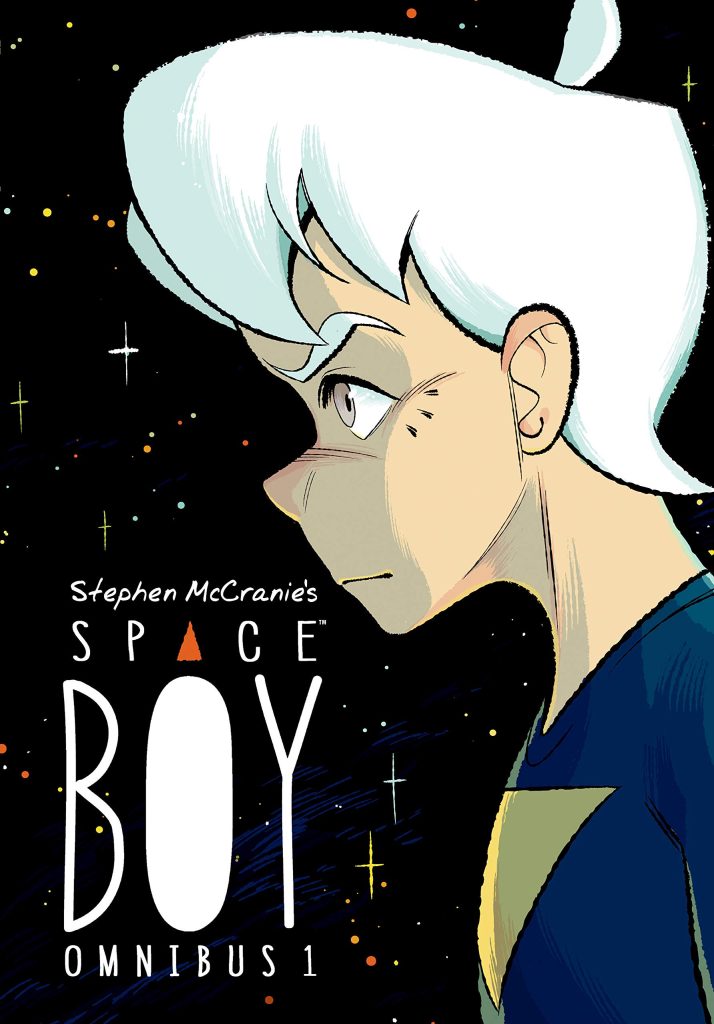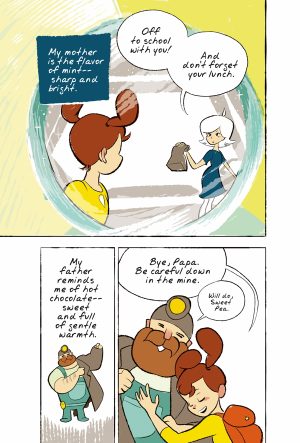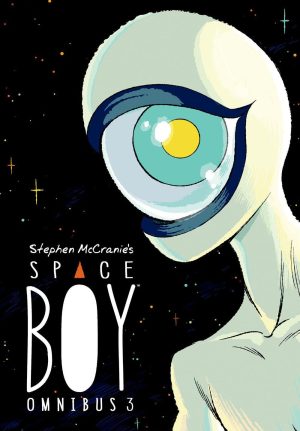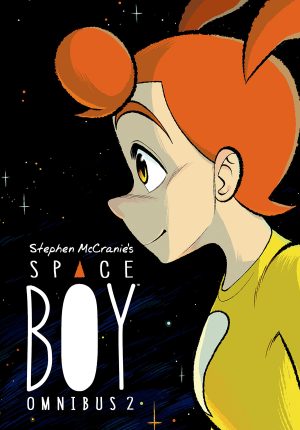Review by Ian Keogh
It’s relevant to know a couple of things before embarking on Space Boy because otherwise you might be disappointed despite Stephen McCranie’s attractive cartooning. The first is that the Space Boy title could raise expectations of something other than a high school drama. It does, startlingly eventually, become something different, but at this stage the primary character is Amy, and almost everything is from her viewpoint.
The other aspect worth knowing concerns the very slow pace. Over the first two thirds of this collection it’s the attention paid to Amy’s feelings that drags readers through ordinary scenes of her adapting to life on Earth as McCranie gradually expands the cast around her at school. For a long time the really powerful moments are few. It’s to do with Space Boy originally being serialised in small snippets online. There the individual episodes charmed, but when combined in book form the repetition and lack of greater purpose to some scenes becomes apparent. However, anyone who enjoys a high school drama with every moment spelled out won’t be worried about the pace.
Amy is human, but first seen as a resident of a mining colony on a distant planet where she’s a teenager. She hangs around with best friend Jemmah until the bad news that the family will be returning to Earth, a journey requiring thirty years in cryogenic stasis. Amy is a delightful character, whose emotions and thoughts have a realistic touch, and she comes with the stylistic quirk of somehow associating a smell with every person she meets. It’s puzzling, therefore, when she first runs into the boy later revealed as Oliver, from whom she can discern no smell.
Although Amy rapidly makes school friends, it’s her interactions with Oliver that prove the most interesting. It’s where McCranie moves away from standard high school drama and into existential questions. Oliver is withdrawn, possibly depressive, while also being mysterious in other respects. Because Space Boy is such a long form drama there are no answers here, nor indeed in Omnibus 2, but the mysteries around Oliver are many and fascinating.
McCranie ends with some chatty and informative process pages. Unlike some other high school dramas this is good-natured and generally cheerful, reminiscent of Andi Watson’s work in some ways. McCranie’s drawing is different, but ideal, and greater pace would make for a great improvement. That said, that Space Boy has Omnibus collections indicates a plentiful readership not bothered. This is the ideal story format, but also available are slimmer paperbacks Space Boy 1, 2 and 3.



